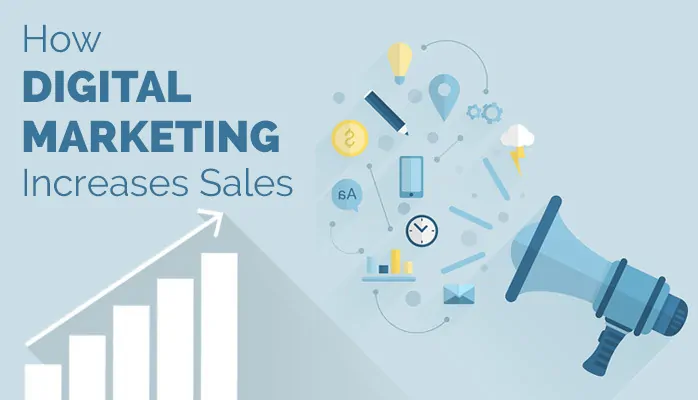Proven Methods to Increase Conversions and Maximize ROI

Increasing conversions and maximizing return on investment (ROI) is a primary goal for any business, particularly in e-commerce and digital marketing. Achieving these objectives requires a strategic approach that focuses on improving the user experience, optimizing marketing efforts, and leveraging data to make informed decisions. This article explores proven methods to boost conversions and maximize ROI.
1. Enhance Website Usability and User Experience (UX)
A seamless, intuitive user experience can significantly increase conversions. Here’s how you can enhance UX:
- Simplify Navigation: Ensure your website is easy to navigate with a clear menu structure and intuitive layout.
- Mobile Optimization: As mobile shopping continues to grow, ensure your site is fully responsive and provides a smooth experience on all devices.
- Fast Load Times: Slow websites lead to high bounce rates. Optimize images, use lazy loading, and choose fast hosting solutions to speed up your site.
- Clear Calls-to-Action (CTAs): Make sure your CTAs are noticeable and compelling. Use action-oriented text like “Buy Now” or “Get Started” and place them strategically throughout the user journey.
2. Implement A/B Testing and Conversion Rate Optimization (CRO)
A/B testing is a vital method for finding the most effective website elements that encourage conversions.
- Test Headlines and CTAs: Experiment with different headlines, button texts, and designs to find what resonates best with your audience.
- Optimize Landing Pages: A/B test your landing pages to determine which version leads to the highest conversion rates. This includes testing page layout, content, and form fields.
- Use Heatmaps and Analytics: Tools like Hotjar or Crazy Egg can show where visitors are clicking, scrolling, and spending the most time, which can inform design and content decisions.
3. Optimize the Checkout Process
A complicated or lengthy checkout process can lead to abandoned carts. To maximize conversions, simplify the purchase journey:
- Guest Checkout Option: Allow users to purchase without requiring account creation.
- Minimal Form Fields: Limit the number of form fields to reduce friction and make it easier for customers to complete their purchases.
- Multiple Payment Options: Offer various payment methods, including credit cards, PayPal, Apple Pay, and other popular options.
- Progress Indicators: Include a progress bar to show customers how far they are in the checkout process, reducing uncertainty and abandonment.
4. Leverage Social Proof and Testimonials
Customers are more likely to purchase products or services when they see others have had positive experiences.
- Customer Reviews: Display authentic reviews and ratings prominently on product pages. Encourage customers to leave feedback by sending post-purchase follow-up emails.
- Case Studies and Testimonials: Use detailed case studies or testimonials from satisfied customers to showcase how your product has solved their problems.
- User-Generated Content: Encourage customers to share their experiences via social media or your website, creating additional trust and credibility.
5. Personalize the User Experience
Personalization allows you to cater to your customers’ preferences, which can significantly boost engagement and conversions.
- Product Recommendations: Use data on past purchases and browsing behavior to suggest products that align with individual preferences.
- Personalized Emails: Send targeted emails based on users’ behaviors, such as abandoned cart emails, product recommendations, and special offers for loyal customers.
- Location-Based Customization: Tailor content or offers based on the user’s location to make the experience more relevant.
6. Offer Time-Sensitive Promotions and Discounts
Urgency and scarcity can encourage customers to take action immediately, boosting conversions.
- Limited-Time Offers: Use countdown timers for sales and promotions to create a sense of urgency.
- Flash Sales: Periodically run flash sales with deep discounts for a limited time to drive immediate action.
- Discount Codes: Offer exclusive discount codes to first-time visitors or loyal customers to incentivize purchases.
7. Utilize Retargeting and Remarketing
Retargeting is an effective way to re-engage customers who have visited your website but left without purchasing.
- Display Ads: Run retargeting ads on platforms like Google and Facebook to remind users of products they viewed but didn’t purchase.
- Email Remarketing: Send abandoned cart emails, offering discounts or incentives to encourage customers to complete their purchases.
- Dynamic Remarketing: Display personalized ads that show products the customer previously viewed or added to their cart.
8. Enhance Customer Support and Engagement
Providing excellent customer service can lead to higher customer satisfaction and improved conversion rates.
- Live Chat: Implement live chat or chatbots to provide instant assistance and answer customer queries in real time.
- Comprehensive FAQs: Offer a well-organized FAQ section that addresses common concerns and can assist customers in making decisions faster.
- Post-Purchase Support: Provide easy access to customer service for post-purchase inquiries, returns, and product support.
9. Use High-Quality Content Marketing
Content marketing can help attract, engage, and convert customers by providing value through information.
- Blog Posts: Write informative and SEO-optimized blog posts that help solve your audience’s problems or provide valuable insights.
- Video Marketing: Create engaging videos that showcase your product’s benefits, customer success stories, or tutorials.
- Guides and E-books: Offer downloadable resources like guides or e-books in exchange for email addresses, building your email list for future remarketing.
10. Track and Analyze Data to Make Informed Decisions
Data-driven decisions are essential for maximizing ROI. Use the following methods:
- Google Analytics: Monitor user behavior, traffic sources, and conversion rates to understand what’s working and what needs improvement.
- Customer Journey Mapping: Map out the entire customer journey to identify areas of friction and improve the overall experience.
- Attribution Modeling: Use attribution models to understand the channels and touchpoints that contribute most to conversions, helping to allocate resources effectively.
Conclusion
Increasing conversions and maximizing ROI requires a comprehensive strategy that combines optimizing your website, utilizing data, and providing a personalized, seamless customer experience. By implementing these proven methods and continuously analyzing performance, you can boost your business’s profitability and build a loyal customer base.






